Another Summer Tour today, but this time we headed down to the Brecks. Another lovely sunny day and, even better, the wind dropped. It was a glorious day to be out.
We started at Weeting Heath. We wanted to see the Stone Curlews before the heat haze got too bad, so we headed straight for West Hide. We could see three pairs of Stone Curlews – two were a little more distant, but one pair was feeding out on the grass with two already well-grown chicks. They are not the most doting of parents, and for the greater part of the time left the chicks to fend for themselves, though remaining nearby and keeping a watchful eye out for any predators.
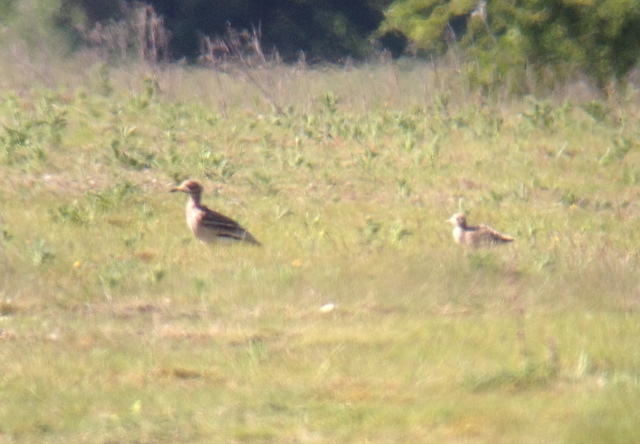 Stone Curlew – adult and well-grown chick
Stone Curlew – adult and well-grown chick
We could hear a Firecrest singing while we were in the hide, so we stepped back outside to try to track it down. It was singing from the very tops of the pines, further along. We walked a little further down the main path and could see it flitting around below the canopy of the trees and it dropped down into an ivy-covered trunk.
The Spotted Flycatchers seemed to be a little elusive at first. We were just about to move on when we spotted one briefly, flying through the trees. Next thing we knew it appeared on a dead branch right in front of us, then flicked round and dropped into the ivy. It had landed on a nest! It was next to impossible to see, so well camouflaged, but we could just see a head and eye looking out.
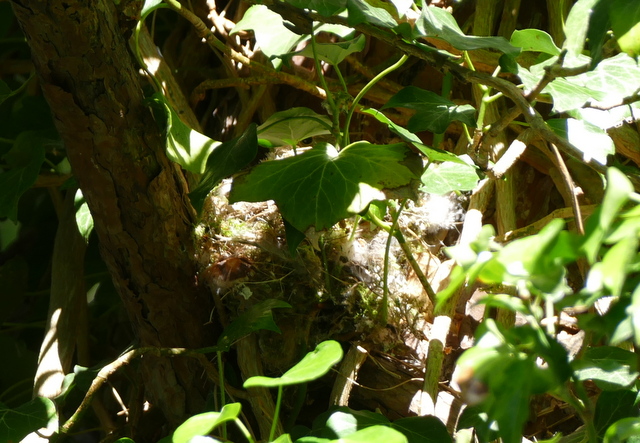 Spotted Flycatcher – on the nest, can you see it?
Spotted Flycatcher – on the nest, can you see it?
Lakenheath Fen was the next stop on the itinerary. It was very busy in the car park – lots of people are seemingly still visiting in the hope of glimpsing the secretive Little Bittern. As we walked out along the main path, we had a chance to catch up with a few of the regular warblers singing again. There were lots of Common Whitethroats, several Blackcaps, many Reed Warblers and the odd Sedge Warbler, and a few very noisy Cetti’s Warblers. New Fen viewpoint was a little quiet, but a Kingfisher flew into the pool in front and landed in the reeds. It caught a fish – unfortunately out of view – and then flew off with in into the trees. A Cuckoo flew overhead.
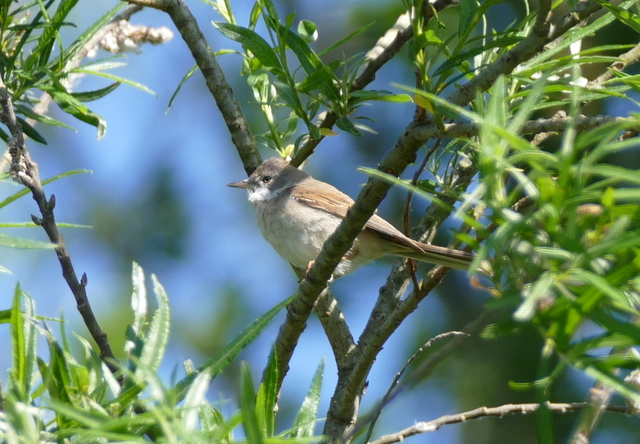 Common Whitethroat – there were lots singing at Lakenheath today
Common Whitethroat – there were lots singing at Lakenheath today
As the temperature warmed, suddenly the Hobbys appeared. Before we knew it, we had at least three circling together round above us catching flying insects. It was great to just stand there and watch them, marvel at their effortless flight and exceptional manoeuvrability!
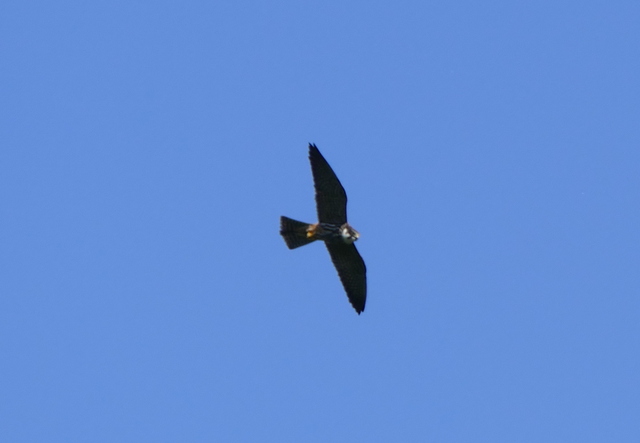 Hobby – we watched several hawking for insects over New Fen
Hobby – we watched several hawking for insects over New Fen
We could hear a Bittern (a Great Bittern!) booming from the reeds in front of the New Fen Viewpoint, and we could hear it even better further along the path. At the west end of the West Wood, we caught up with the crowds awaiting the appearance of the Little Bittern. Normally a native of Central and Southern Europe, they have bred in Somerset in recent years. This one overshot the continent on its return migration this spring and has ended up here – if only it could find a female! We only waited a short time, and we really wanted to hear it (some people have waited many hours just to catch a glimpse of it). Eventually it started ‘singing’ – or should we say ‘barking’. It sounds rather like a cross between a dog bark and a toad croak, issued repeatedly. What a treat – to hear two species of Bittern within a few hundred yards of each other!
We walked up onto the river bank and, after a little while searching, we located a couple of adult Common Cranes in the reeds. We could see two long necks periodically stretching up, with black and white necks and red crowns. Standing over a metre tall, they can be surprisingly hard to see. They have a chick in tow, so we were careful not to disturb them,; we had a quick look and then headed back to the reserve.
On our way back, we stopped in at Mere Hide. There were several young Coot on the pond, together with their parents. Another Cuckoo sang from the trees. A Sedge Warbler kept coming down to the reeds in front of the hide to gather food, presumably for a hungry brood somewhere. Several Reed Warblers lurked more furtively in the reeds. We could hear Bearded Tits calling on a few occasions, but only glimpsed a shape flying up and over the reeds briefly.
 Four-spotted Chaser – it was a good day for the number of dragonflies today
Four-spotted Chaser – it was a good day for the number of dragonflies today
There was a good selection of Dragon- and Damselflies to look at as well today. Numbers of Four-spotted Chasers and Black-tailed Skimmers are starting to increase, but we also saw a few Hairy Dragonflies. Damseflies includes Large Red, Azure, Blue-tailed and Red-eyed Damselflies. As well as the regular butterflies, there were notable numbers of Painted Ladys again today.
After lunch, we headed into the Forest. Walking along a sunny ride, the grassy margins either side were alive with butterflies and day-flying moths. The butterflies were mostly Common Blues, along with a single electric Green Hairstreak. The moths were all Speckled Yellows, an enormous number of them.
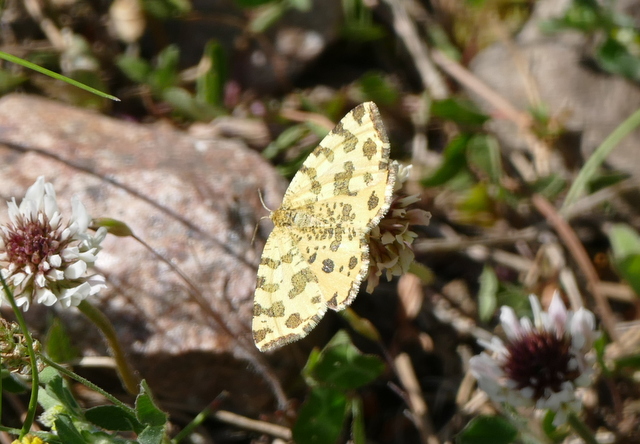 Speckled Yellow – enormous numbers of this day-flying moth on the wing
Speckled Yellow – enormous numbers of this day-flying moth on the wing
We came to a large clearing, which is always good for pipits and larks, but an unusual song drew our attention to one corner. There, amongst the trees, a very smart male Redstart was singing. A slightly odd place to find one, they are very rare these days away from the Stanford battle area, so this was a real treat. We got him in the scope and got a good look and then stood and listened to him singing.
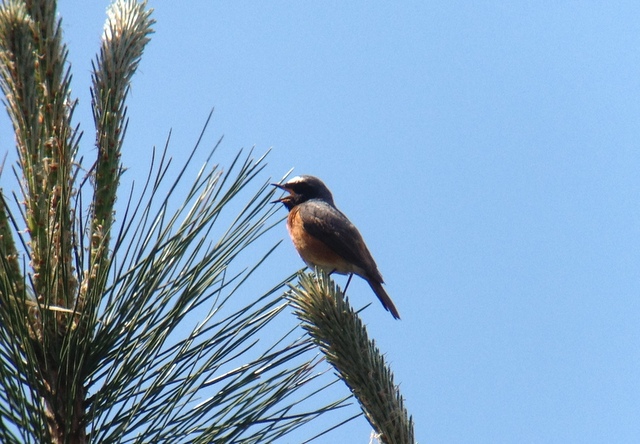 Redstart – singing in a clearing in the Forest
Redstart – singing in a clearing in the Forest
Out beyond the Redstart, we could hear a different song carried across the clearing. A quick scan revealed a Tree Pipit singing from the very top of a pine tree. There were other birds around the clearing as well – a family of Mistle Thrushes, several smart male Yellowhammers, and Skylarks singing.
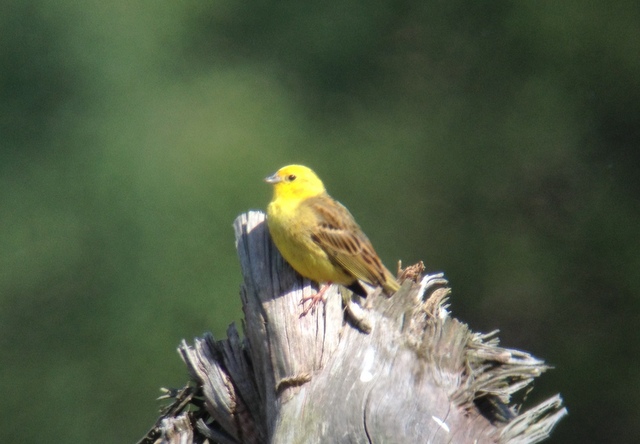 Yellowhammer – singing from the same clearing today
Yellowhammer – singing from the same clearing today
We finished the day with a quick visit to Lynford Arboretum. We hadn’t even left the car park, when we heard the first Firecrest singing. A Goldcrest singing nearby gave a great opportunity for comparison. We ended up hearing at least 4 singing Firecrests around the Arboretum this afternoon. We managed to see one of them flicking surreptitiously around a fir tree.
There were other birds to see here as well – tits, Treecreepers, a smart pair of Siskin and a very pink male Bullfinch. Unfortunately, then we had to call it a day and head back, but what an enjoyable day it had been.
















